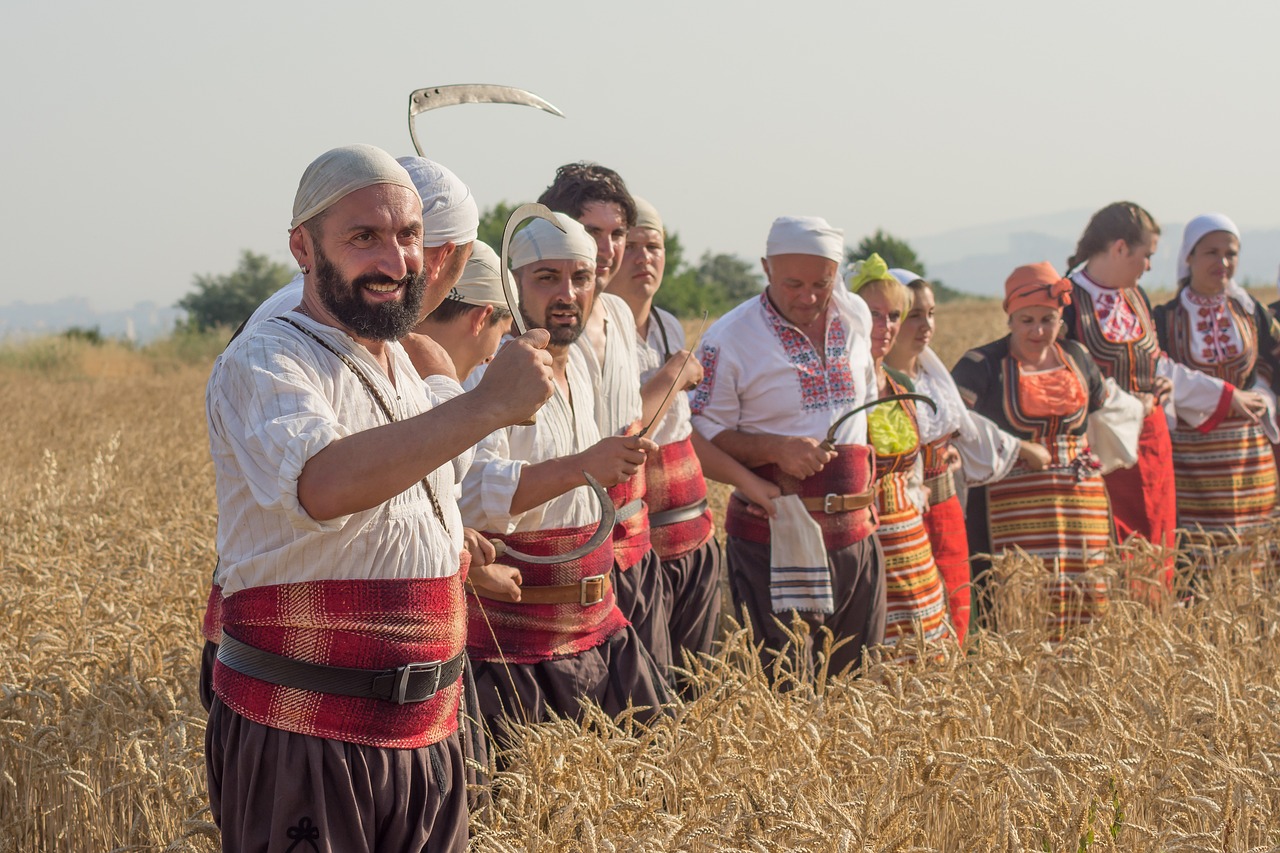Exploring the flavors of Bulgarian cuisine may seem daunting. After all, the country has a unique blend of traditional dishes that draw influences from Greece and Turkey.
However, those who take the plunge into this culinary journey will find that it is a journey of freedom and discovery, as they explore the variety of flavors that Bulgaria has to offer.
From traditional staples like tomato and cucumber salad to regional variations like kiselo mlyako and sausages, Bulgarian cuisine has something for everyone.
Seafood lovers can try the carp while adventure seekers can visit Belogradchik Rocks and the fortress for a unique experience.
Whether it is a meal of stuffed vegetables or banitsa, a filo pastry with lucky charms, Bulgarian cuisine is sure to delight the palate.
Key Takeaways
- Bulgarian cuisine shares similarities with Greek and Turkish food, including dishes such as tomato, cucumber, and cheese salad, moussaka, filo pastries, and stuffed vine leaves.
- Traditional Bulgarian dishes often feature yogurt, cheese, spices, and herbs, with chubritsa being a commonly used herb in soups, stews, and bread.
- Meatless dishes are common in Bulgarian cuisine, such as the monastery-style bean soup and stuffed vegetable dishes, particularly peppers.
- Regional variations in Bulgarian cuisine can be attributed to the country’s geography, with lower mountain ranges known for livestock farming, plains for growing fruits and vegetables, and the Black Sea offering seafood options.
Traditional Staples
Bulgarian traditional food is characterized by a reliance on vegetables, fruit, and dairy products often seasoned with spices and herbs such as chubritsa.
Traditional Bulgarian dishes feature yogurt, cheese, and herbs like dill. Stuffed vegetable dishes, such as peppers, are favorites. Carp is served on St. Nicholas Day. Banitsa, a filo pastry with hidden lucky charms, is enjoyed during Christmas and New Year.
A range of meatless dishes are also popular, such as monastery-style bean soup, tarator cold soup, and gyuvetch, a vegetable stew.
Regional variations of the cuisine are due to the geography of the country. The plains of Bulgaria are renowned for growing the best fruits and vegetables, while the lower mountain ranges are noted for their livestock farming. The Black Sea provides a variety of seafood for the coastal regions, including mussels from pollution-free sources.
Traditional staples of Bulgarian cuisine offer a variety of flavors and experiences for all to enjoy.
## Regional Variations
Geographical features of Bulgaria have led to regional variations in traditional cuisine. Depending on the area, meals may consist of hearty stews, vegetarian dishes, fish from the Black Sea, or cured meats.
The lower mountain ranges are known for livestock farming, while the plains produce the best fruits and vegetables. Kiselo mlyako (yogurt) made from cow’s milk is a staple, as well as cheese similar to Greek feta.
Regional influences such as Chubritsa, a herb similar to oregano, and Bansko, a horse riding experience for all levels, shape the country’s culinary heritage.
Must-see attractions near Sofia include Asens Fortress, Bachkovo Monastery, and Belogradchik Rocks and Fortress. Nessebar offers a boat tour with fishing, lunch, and drinks. Sofia Airport provides transfers to Borovets Ski Resort.
My Guide Bulgaria lets visitors explore the flavors of Bulgarian cuisine.
## Seafood and Adventure
Adventurous travelers can enjoy a plethora of seafood options along the Black Sea coast, such as Ribena chorba, a flavorful fish soup seasoned with thyme.
Along the coast, mussels can be found, although they must be sourced from pollution-free areas.
For a thrilling experience, visitors can take boat tours with fishing, lunch, and drinks.
Skiers and snowboarders will find Borovets Ski Resort only a short transfer away from Sofia Airport.
Those looking to explore the Bulgarian countryside can go horseback riding in Bansko.
These activities are sure to provide visitors with an exciting and memorable experience.
Along with these thrilling water activities, travelers can also savor the delectable seafood delicacies that the Black Sea coast has to offer.
## Frequently Asked Questions
### What are the best restaurants to try traditional Bulgarian cuisine?
To sample traditional Bulgarian cuisine, visit restaurants such as Asens Fortress, Belogradchik Rocks and Fortress, or Bachkovo Monastery. Enjoy regional specialties prepared with traditional cooking methods, and savor dishes featuring local spices, herbs, and cheeses. Try the hearty stews, stuffed vegetables, and fresh seafood for a truly unique experience.
### What are the top three Bulgarian dishes that tourists should try?
Tourists should try the traditional dishes of moussaka, tarator cold soup, and stuffed vegetables, incorporating authentic ingredients and regional variations. Enjoy these flavors and explore Bulgarian cuisine with its varied regional specialties.
### What is the traditional way of serving Bulgarian dishes?
Bulgarian cuisine is traditionally served with eating customs that reflect the country’s rich culture. From drinking etiquette to savoring regional variations, meals often begin with a salad and are finished with local brandy. Dishes are complemented with herbs, spices, and yogurt, allowing diners to experience the flavors of Bulgaria.
### What are the most popular desserts in Bulgaria?
Popular desserts in Bulgaria include traditional sweets such as baklava, kadaif, and halva, which are often served at festivals. Sweet pastries like banitsa, made with cheese and filo pastry, are also popular.
### What is the best way to experience Bulgarian culture through food?
To experience Bulgarian culture through food, explore local markets for ingredients and learn how to cook traditional Bulgarian dishes. Attend cultural events to sample regional specialties, such as carp on St. Nicholas Day, and visit restaurants to sample dishes like tarator, gyuvetch, and kavarma. Enjoy regional wines, rakiya, and kiselo mlyako for a unique culinary experience.










